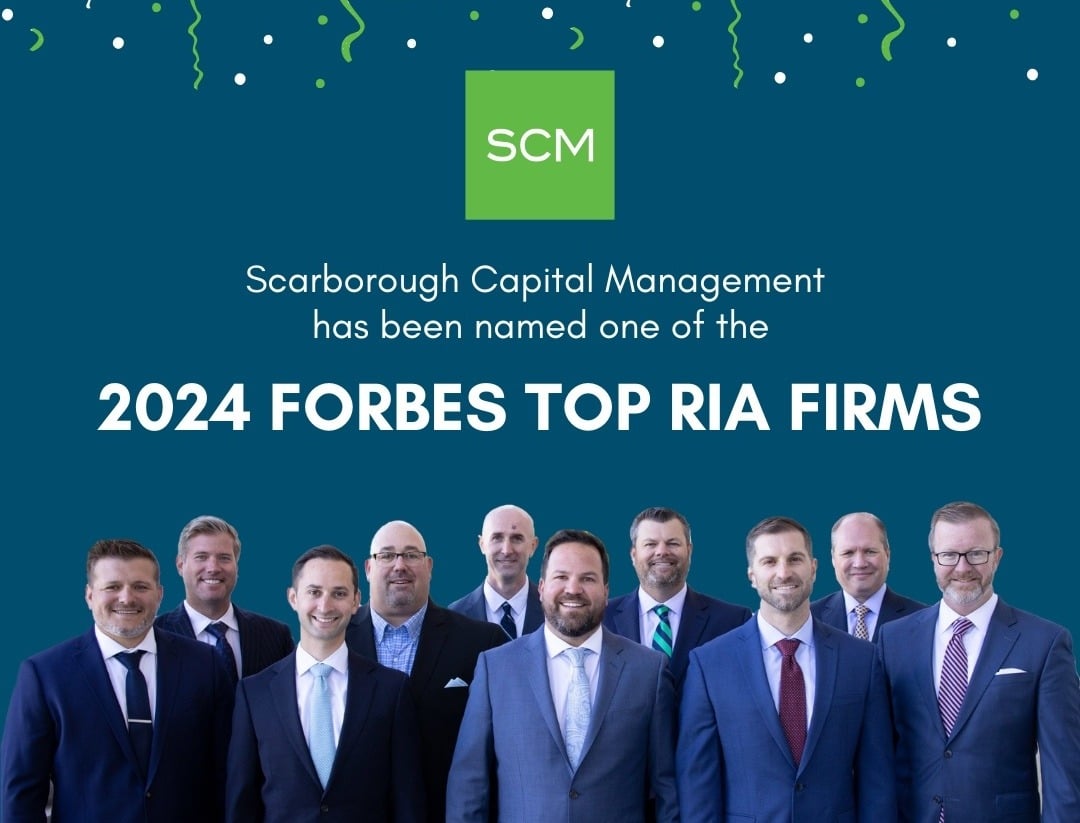

by Jonathan W. Szostek
A Financial Planning Tip All Federal Employees (and Military Personnel) Should Know
Employer-sponsored retirement plans are among the most useful financial tools that professionals can have. Of course, simply securing a job with a solid salary is a great thing, but many overlook the financial power of the retirement plan at their disposal, and how much it can help their financial future.
Private corporations may get the most attention, but members of the military and federal government employees possess the same financial benefits and have full access to one of the strongest retirement plans around: The Thrift Savings Plan (TSP).
A TSP is unique and has different elements than your typical 401(k) or IRA, so it’s wise to get TSP advice from a financial advisory firm that truly understands what they are and how they work. Scarborough Capital Management is one of these firms. We are located in Annapolis and have helped people with their TSPs for more than 30 years. If you have questions about your TSP, contact us to see how we can help.
What is a TSP?
A TSP is a retirement plan available to government employees and military personnel. Just like a 401(k) from a corporation, a TSP is a defined contribution plan, which means you can choose the amount of your retirement account deposits from each paycheck and obtain all the associated benefits.
While you can take money out of the account, remember that withdrawals are considered added income and taxable, and you may be subject to a penalty if you are under the age of 59-½.
A Savings Boost and Tax Benefits Right Off the Bat
As soon as you save your first dollar into your TSP, it starts working for you. Money goes into your TSP directly from your paycheck in what’s called an elective deferral. Any money you elect to save in your TSP is deducted from your salary, which automatically lowers your taxable income.
This can be a huge benefit. The cost of living in Annapolis, for example, is 17.5 percent higher than the national average, so any sizable savings can improve your yearly finances. Being able to duck under your next tax bracket can amount to tens of thousands of dollars in savings in your pocket.
There are limits on how much you can contribute to a TSP. Each year, you can defer up to $23,500 from your paycheck, with an extra $7,500 in “catch up” contributions if you are over the age of 50.
Using your TSP gives you both immediate and long-term benefits. In the short term, you receive your annual tax benefits; in the long term, you are accumulating your personal retirement fortune. These benefits are multiplied by the second most important component of your employer-sponsored retirement plan – investments.
Have questions about your TSP? Contact Scarborough Capital Management to see how we can help.
TSPs and Investments
The world of investing can be extremely daunting. So daunting, that many investors choose not to get involved or ignore their accounts. This can be dangerous.
Just a few years ago, more than 40 percent of investors didn’t know how their assets were invested in their retirement accounts. This could mean they’re in a risky portfolio, not invested at all or somewhere in between.
Fortunately, your investment options in your TSP are structured and pretty straightforward. Also, while most investors have no idea how much they pay in retirement plan investment fees, TSPs are almost always more affordable.
6 Portfolio Models
There are 6 portfolio models that suit most investors. Which is right for you depends on your risk tolerance and situation. Again, seek TSP advice from a financial advisor who understands these unique retirement plans.
- Government Securities (G) Fund: This is a portfolio that generates interest and is composed of investments backed by the U.S. Government. While this portfolio is protected from loss, the gains are considerably smaller and may not always beat the rate of inflation.
- Fixed-Income (F) Fund: The F funds hold fixed-income securities (bonds). These investments traditionally have lower risk than stocks, but lower returns. Additionally, like bonds, these portfolios are affected by changing interest rates and may underperform stocks when interest rates are very high.
- Common-Stock (C) Fund: This fund is a mix of mid to large U.S stocks, which has higher risk and return potential than bonds. The common stock fund can be a good option for younger investors further away from their retirement date who are comfortable with market risk.
- Small-Capitalization Stock (Fund): Stocks offer higher risk and return potential than bonds, and more so with small-cap stocks. The small to mid-sized companies that make up this portfolio may be a good fit for investors who are comfortable with the higher risk from investing in small cap stocks.
- International-Stock (I) Fund: International stocks are known to have the highest amount of risk. Investors can gain from trends in foreign markets, but that invites unique foreign risks as well.
- Lifecycle Funds: Lifestyle funds mean you will have one fund for your entire life. This can have benefits and drawbacks.
The aforementioned investment options are a solid way to grow your account with a risk level that fits your temperament. The only downside to these funds is the first five don’t change. Lifestyle Funds can help solve this problem.
Instead of investing with only one risk level for the long term, lifecycle funds are a mix of the TSP model portfolios and change over time. Each fund is designed with a specific retirement date in mind and it slowly becomes less risky as it gets closer to the date.
For example, the Lifecycle 2050 fund available in your TSP is designed for an investor to retire in the year 2050 and then begin making withdrawals. This means that currently, the portfolio owns a higher percentage of stocks and may utilize a more aggressive strategy.
As the calendar gets closer to 2050, the portfolio will gradually transition from aggressive to conservative. Eventually, the portfolio will be composed of bonds and lower-risk investments.

At first glance, these funds may sound perfect, but not every investor is the same. Talk with a financial advisor for more specific TSP advice based on your situation, concerns, and goals.
Other Unique TSP Benefits
A TSP has special features that certain federal employees or military personnel may be eligible for that can boost retirement savings even further.
Matching Contributions
Automatically, participants of TSPs receive a 1 percent match to their contributions that do not count against the annual $19,500 per year (or 26,000 if you are over age 50). What this means is your employer will add an extra 1 percent to your TSP for every dollar you contribute. If you can manage to contribute at least 5 percent of your salary to your retirement plan, you can receive the maximum employer match.
Combat Zone Benefits for Military Personnel
Members of the military can earn tax-exempt income while deployed into a combat zone. If these funds are directed into a TSP, the funds can be withdrawn without having to pay taxes. Remember, however, that funds withdrawn before the age of 59-½ that were not earned while deployed into combat are still taxable and subject to penalty.
Available Roth Option
TSP account holders can elect to make contributions pre-tax, after-tax or a mix of both. As mentioned earlier, pre-tax contributions are made directly from your salary and reduce your taxable income. This means that the income taxes have been avoided and not paid (pre-tax).
Roth or after-tax contributions, on the other hand, have a different benefit. Since you cannot deduct your contributions, your taxable income also cannot be reduced. But when you retire, your savings and investment gains can be withdrawn without paying taxes.
Where to Get TSP Advice
A financial advisor can be a huge resource, and a little TSP advice from someone who knows the ins and outs of these plans can go a long way.
Whether you’re a federal employee or a member of the military, a financial advisor can help guide you to make educated decisions about your TSP and your overall financial plan. Once you configure your retirement accounts properly, you can take full advantage of your TSP, which makes securing your financial future that much easier.
Contact Scarborough Capital Management to get started.
Securities through Independent Financial Group, LLC (IFG), a registered broker-dealer. Member FINRA/SIPC. Advisory services offered through Scarborough Capital Management, a registered investment advisor. IFG and Scarborough Capital Management are unaffiliated entities.







